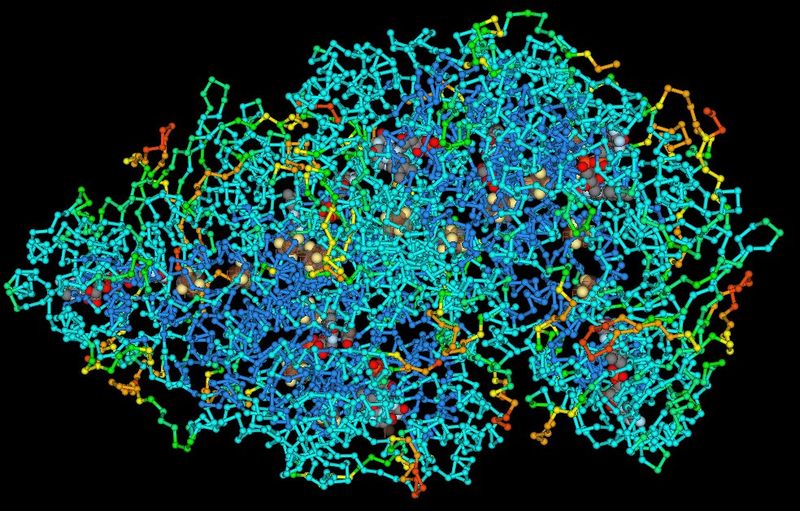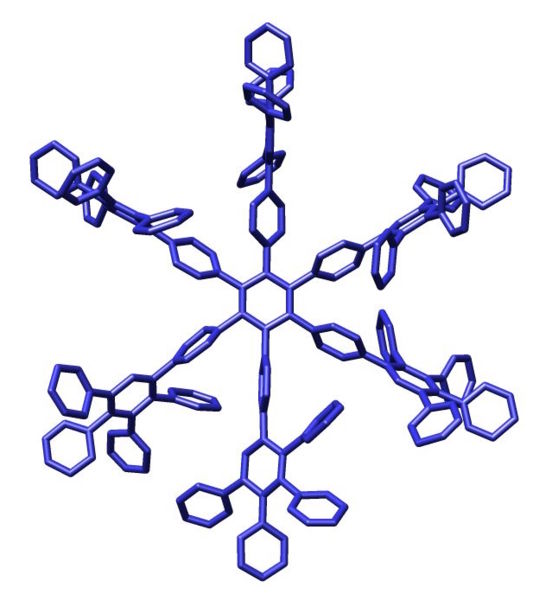Macromolecule
Editor-In-Chief: C. Michael Gibson, M.S., M.D. [1]

|
WikiDoc Resources for Macromolecule |
|
Articles |
|---|
|
Most recent articles on Macromolecule Most cited articles on Macromolecule |
|
Media |
|
Powerpoint slides on Macromolecule |
|
Evidence Based Medicine |
|
Clinical Trials |
|
Ongoing Trials on Macromolecule at Clinical Trials.gov Trial results on Macromolecule Clinical Trials on Macromolecule at Google
|
|
Guidelines / Policies / Govt |
|
US National Guidelines Clearinghouse on Macromolecule NICE Guidance on Macromolecule
|
|
Books |
|
News |
|
Commentary |
|
Definitions |
|
Patient Resources / Community |
|
Patient resources on Macromolecule Discussion groups on Macromolecule Patient Handouts on Macromolecule Directions to Hospitals Treating Macromolecule Risk calculators and risk factors for Macromolecule
|
|
Healthcare Provider Resources |
|
Causes & Risk Factors for Macromolecule |
|
Continuing Medical Education (CME) |
|
International |
|
|
|
Business |
|
Experimental / Informatics |
The term macromolecule by definition implies "large molecule". In the context of biochemistry, the term may be applied to the four conventional biopolymers (nucleotides, proteins, carbohydrates, and lipids), as well as non-polymeric molecules with large molecular mass such as macrocycles.
Usage
The term macromolecule was coined by Nobel laureate Hermann Staudinger in the 1920s. Usage of the term to describe different forms of large molecules varies among the disciplines. For example, while biology refers to macromolecules as the four large molecules living things are composed of, from the perspective of chemistry, the term may refer to aggregates of two or more macromolecules held together by intermolecular forces rather than covalent bonds but which do not readily dissociate[1].
According to the recommended IUPAC definition, the term macromolecule as used in polymer science refers only to a single molecule. For example, a single polymeric molecule is appropriately described as a "macromolecule" or "polymer molecule" rather than a "polymer", which suggests a substance composed of macromolecules[2].

Because of their size, macromolecules are not conveniently described in terms of stoichiometry alone. The structure of simple macromolecules, such as homopolymers, may be described in terms of the individual monomer subunit and total molecular mass. Complicated biomacromolecules, on the other hand, require multi-faceted structural description such as the hierarchy of structures used to describe proteins.
Properties
Substances that are composed of macromolecules often have unusual physical properties. The properties of liquid crystals and such elastomers as rubber are examples. Although too small to see, individual pieces of DNA in solution can be broken in two simply by suctioning the solution through an ordinary straw. This is not true of smaller molecules. The 1964 edition of Linus Pauling's College Chemistry asserted that DNA in nature is never longer than about 5000 base pairs. This is because biochemists were inadvertently and consistently breaking their samples into pieces. In fact, the DNA of chromosomes can be tens of millions of base pairs long.
Another common macromolecular property that does not characterize smaller molecules is the need for assistance in dissolving into solution. Many require salts or particular ions to dissolve in water. Proteins will denature if the solute concentration of their solution is too high or too low.
References
- ↑ van Holde, K.E. Principles of Physical Biochemistry Prentice Hall: New Jersey, 1998
- ↑ http://www.iupac.org/reports/1996/6812jenkins/6812basicterms.pdf
External links
- Synopsis of Chapter 5, Campbell & Reece, 2002
- Lecture notes on the structure and function of macromolecules
- Several (free) introductory macromolecule related internet-based courses
ar:جزيء كبري cs:Makromolekula de:Makromolekül el:Μακρομόριο fa:درشتملکول gl:Macromolécula ko:고분자 id:Makromolekul it:Macromolecola he:מקרומולקולה lt:Makromolekulė nl:Macromolecuul no:Makromolekyl nn:Makromolekyl simple:Macromolecule sk:Makromolekula sl:Makromolekula su:Makromolekul sv:Makromolekyl uk:Макромолекула ur:سالمۂ کبیر Template:Jb1